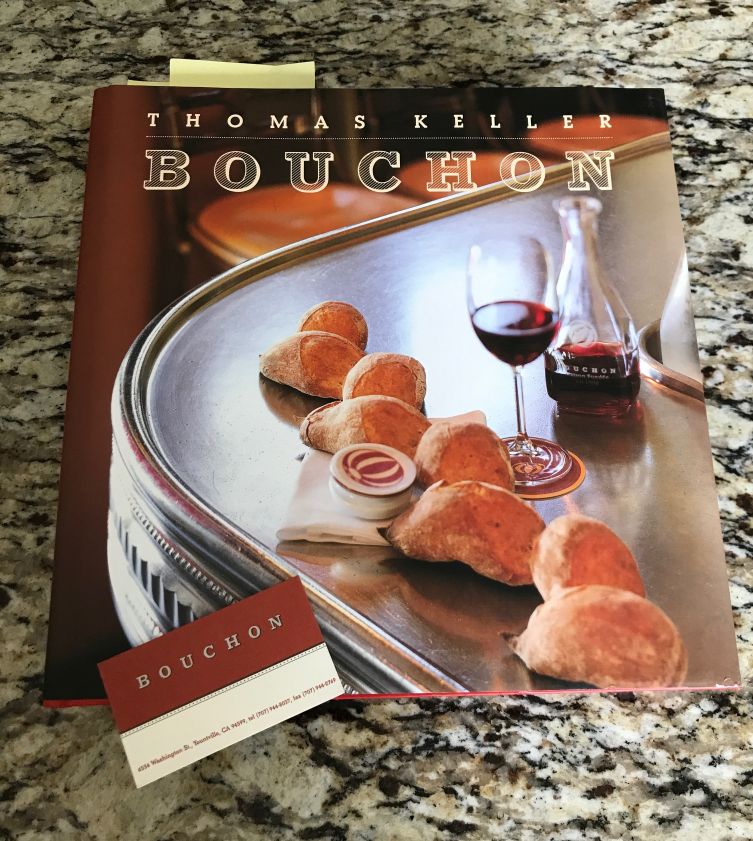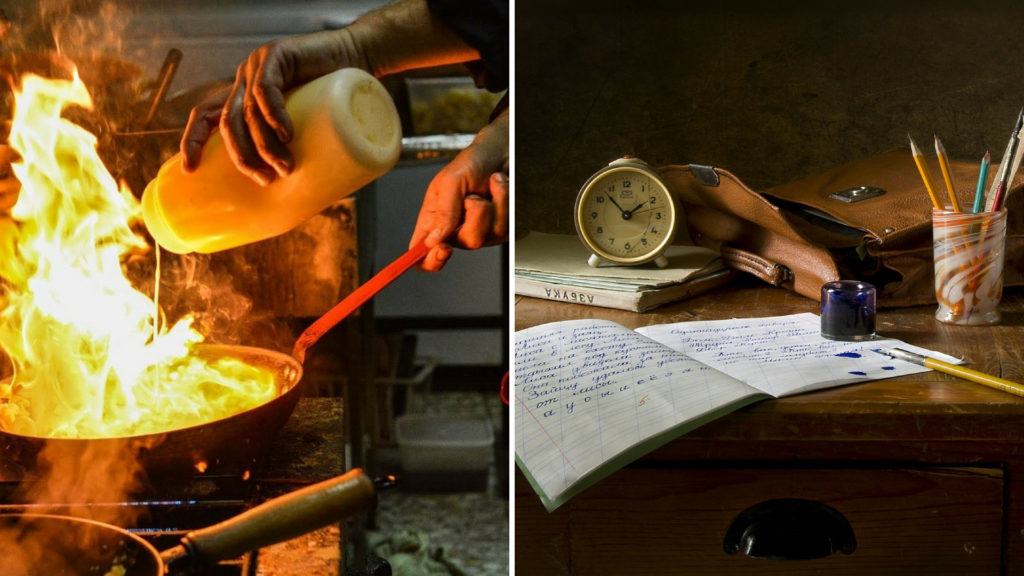The Dining Out Dilemma
If you’ve read some of our earlier posts, you know that we like to go out to eat, especially if we find a new restaurant and get to try new foods. We know that great tasting food, attentive service and a pleasant atmosphere can be found at places all across the price spectrum. Of course, the opposite is also true. It’s a risk we take when traveling, though we try to mitigate the risk by reading reviews and counting the number of cars in the parking lot.
It’s trickier at home. We live in a small Midwestern town where the available choices for dining out are limited. There are a handful of locally-owned restaurants that we enjoy and know will be consistently good. But when we branch out beyond those places, we often get to the end of an uninspiring meal, pay the check, and say to ourselves, “We could have done better at home.” On a recent Saturday, we decided to take our own advice.
We had been invited to have dinner at the home of some friends that evening, but on Saturday morning we got a message that one of the hosts was ill and the dinner was cancelled. With no other plan for the evening, we considered our options and decided to cook something special at home.
Leaving the menu to chance
The flip side of the dining out dilemma in our small town is the grocery shopping dilemma. Many of the interesting recipes we want to try require ingredients that are not available locally, even in the massive new chain grocery store.
On this day, we were inspired by an article in Bon Appetit magazine that suggested you should pick your ingredients first, then select the menu.
Carla Lalli Music, the author, spoke to our reality when she wrote “there’s no bigger disappointment than going to the store with a specific dish in mind only to discover the ingredient you need isn’t there, or even worse, looks crappy.”
Carla’s suggestion was “shop first, choose recipes second”. Her advice added a bit of suspense to our meal planning, as in “I wonder what we’ll be eating tonight?”. So that afternoon, when we visited our local butcher shop, The Savory Swine, we took along a copy of Thomas Keller’s Bouchon cookbook.

A slight detour to California
Bouchon is Keller’s other restaurant in Yountville, California. It’s just down the street from The French Laundry. We visited Yountville several years ago during a west coast road trip that took us through the Napa valley. We thought about going to The French Laundry during that trip (and several times since), but couldn’t quite justify spending over $1,000 for a single meal. As my grandfather used to say, “I’ll do that when my rich uncle gets out of the poor house.”
Bouchon is modeled after French bistros. In the introduction to the cookbook, Thomas Keller says he opened Bouchon so he’d “have a place to eat after cooking all night at the French Laundry”. It ain’t cheap, but its not off-the-charts expensive. We had a delightful meal there during our trip. Before dinner, Mary had a Pont Neuf cocktail, which has since become one of her favorites. (We’ll write about it in a future post.)
Back to dinner
The Savory Swine had lots of good looking red meat, but Mary was thinking fish. She looked over the available options and then consulted the cookbook. Keller’s recipe for sole with a brown butter sauce sounded good, and seemed adaptable to the orange roughy fillets that were available.
Prep Notes
One thing about using a recipe from a famous chef is that the instructions are sometimes way more complicated than a home cook is ready to execute. Earlier this year, when Mary tried a different Thomas Keller recipe, she found it was much more involved and time consuming than the end result justified. This time was different. The instructions for the fish were simple and straightforward.
The fish is sauteed and then oven baked. The brown butter sauce is made in the same pan. The sauce is spooned over the fish and some boiled potatoes. Mary served it with green beans.
Mary prepared the meal in under an hour, making it a reasonable option for a weeknight dinner.
The results
Let’s start with this: fish cooked with a brown butter sauce is almost irresistible. The orange roughy came out rich and flaky, hot with a crunchy sear. The butter sauce covered everything – fish, potatoes and green beans. Roughy is a mild fish, and the the butter sauce complimented the flavor of the fish and added a surprise taste of lemon. Garlic and parsley added depth to the dish.
We had a cabernet sauvignon with dinner. The red wine was a perfect accompaniment to the rich, buttery fish.
Best of all was the delight we felt while we ate. Good meals are almost always a pleasant surprise. This one made us smile and laugh and clink our wine glasses together. Cheers!
We would have easily spent $100 or more for this meal in a restaurant. Our dinner at home cost about $35, including the wine.
The Recipe
Pan-Seared Fish with Potatoes and Parsley Lemon Brown Butter
Adapted from Bouchon, by Thomas Keller with Jeffery Cerciello.
Ingredients
For the potatoes
- 6 – red-skin potatoes, long and narrow ( about 3 ½ to 4 inches long) rather than round
- ¼ teaspoon black peppercorns
- 2 thyme sprigs
- 1 bay leaf
- 2 garlic cloves, skin left on, smashed
- 1 tablespoon kosher salt
For the fish
The recipe calls for one 3-pound black sole, Dover sole or flounder, cleaned, head and skin removed. We used 2 orange roughy fillets.
- Canola oil
- Kosher salt and freshly ground white pepper
- All-purpose flour
- 5 tablespoons plus 1 teaspoon unsalted butter
- 1 tablespoon plus 1 teaspoon chopped Italian parsley
- 1 tablespoon plus 1 teaspoon fresh lemon juice
Directions
For the potatoes:
Step 1: Trim the potatoes to oval shapes, about 2 ½ inches long and 1 inch in diameter.
Step 2: Place potatoes, peppercorns, thyme, bay leaf, garlic and salt in a large saucepan and add water to cover the potatoes by 1 inch. Bring to a boil over high heat, then reduce the heat and simmer for about 15 minutes, or until the potatoes are tender.
Keep the potatoes warm in the water while you cook the fish. (The potatoes can be cooked a few hours ahead. After cooking, drain, reserving the water to reheat the potatoes, and set aside.)
For the fish:
Preheat the oven to 375 degrees.
Step 1: Pat the fish dry with paper towels. Heat ⅛ inch of canola oil in a large ovenproof nonstick skillet over high heat. Season the fish on both sides with salt and pepper. Coat the fish with flour and pat off any excess. Place the fish in the hot oil, reduce the heat to medium to medium-high, and add the 1 teaspoon of butter. Cook for about 5 minutes, or until cooked halfway through. Turn the fish over and place in the oven for another 5 minutes, or until just cooked through.
Step 2: While the fish is in the oven, if the potatoes have cooled, rewarm them in the cooking liquid; drain well.
Step 3: Remove the fish from the oven. Use two large spatulas to transfer the fist to a warm serving platter and place in a warm spot. (Mary put the serving platter back in the oven with the heat turned off and the door open.)
Step 4: Drain almost all the oil from the skillet. Return the skillet to medium-high heat. When the oil is hot, add the 5 tablespoons butter and a pinch of salt. Swirl the skillet and let the butter brown. Add the potatoes and roll them in the butter for a minute to coat. Turn off the heat, add the parsley and let it crackle, then add the lemon juice. Keep warm.
To serve:
If cooking a whole fish, cut down the center line of the fish to the bone to separate the top 2 fillets. With a long spatula, carefully transfer the fillets to a plate. Cut out and remove the backbone, then return the top fillets to their original place.
Place fillets on a serving platter. Arrange the potatoes around the fish and spoon the brown butter over the top.
========================================================
What has been your experience cooking recipes by famous (or not so famous) chefs? Leave us a comment below to tell us about it.

========================================================
*All links to books are direct to Amazon.com. At the time of this writing (March, 2019), we receive no affiliate payments if you buy them. If that changes in the future, we’ll let you know.


Reading this right before lunch and now I’m totally committed to making this meal ourselves. It has to happen.
Thanks for your comment, Jon. I hope you enjoy it. Let us know how it turns out.
Very nice! ?